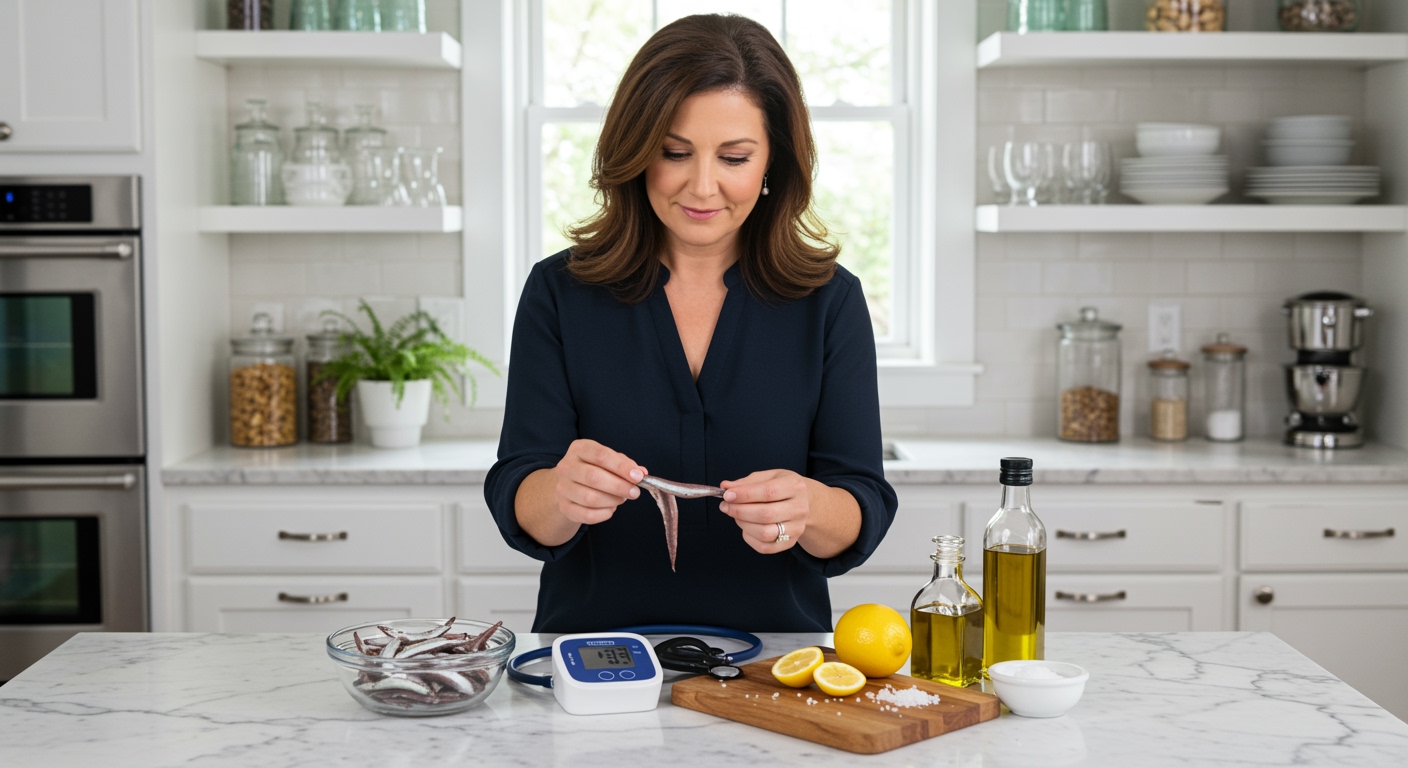✪ Key Takeaway: Sole fish can help raise blood pressure naturally through its protein content and mineral profile, making it beneficial for hypotension.
Introduction
Your doctor just told you that your blood pressure runs too low and you need to make dietary changes.
You might be wondering if adding sole fish to your meals could help raise those numbers naturally without relying on medications or excessive salt intake.
Hi, I’m Abdur, your nutrition coach and today I’m going to explain exactly how sole fish affects your blood pressure and whether it can help with hypotension management.
What Makes Sole Fish Different From Other Seafood?
Sole fish stands out among seafood options because of its unique nutritional profile that directly impacts blood pressure regulation.
This flatfish contains approximately 18 grams of protein per 100-gram serving, which helps your body maintain proper fluid balance and blood vessel function.
The sodium content in fresh sole fish ranges from 80-120 milligrams per serving, which is moderate compared to other fish varieties.
Unlike fatty fish such as salmon or mackerel, sole provides lean protein without excessive omega-3 fatty acids that might lower blood pressure too much.
The mineral composition includes important electrolytes like sodium, potassium, and magnesium that work together to support cardiovascular function.
Research shows that the specific amino acid profile in sole fish helps your body produce angiotensin-converting enzyme, which plays a role in blood pressure regulation.
✪ Fact: Sole fish contains more bioavailable protein per gram than most other white fish varieties.
How Does Sole Fish Actually Affect Blood Pressure?
The protein content in sole fish triggers several physiological responses that can help raise blood pressure in people with hypotension.
When you eat sole fish, your digestive system breaks down the proteins into amino acids that your liver uses to produce albumin and other plasma proteins.
These proteins increase your blood volume by drawing water into your bloodstream through a process called oncotic pressure.
The moderate sodium content works alongside the protein to help your kidneys retain more fluid, which naturally increases blood pressure.
Sole fish also contains tyrosine, an amino acid that your body converts into norepinephrine, a hormone that constricts blood vessels and raises blood pressure.
The B-vitamin complex in sole fish supports healthy red blood cell production, which improves oxygen delivery and can help maintain adequate blood pressure levels.
Studies indicate that regular consumption of lean fish like sole can help people with chronic hypotension maintain more stable blood pressure readings throughout the day.
✪ Pro Tip: Eat sole fish within 2-3 hours of checking your blood pressure for the most accurate assessment of its effects.
What Is The Best Way To Prepare Sole Fish For Blood Pressure Benefits?
The preparation method you choose significantly impacts how sole fish affects your blood pressure levels.
Pan-searing with a small amount of olive oil and sea salt preserves the natural minerals while adding beneficial sodium for blood pressure support.
Avoid breading or deep-frying sole fish because these methods add processed ingredients that can cause unpredictable blood pressure fluctuations.
Steaming or poaching sole fish maintains its protein integrity while allowing you to control sodium levels through seasoning choices.
Adding herbs like rosemary or thyme provides natural compounds that support circulation without interfering with blood pressure regulation.
Lemon juice enhances iron absorption from the fish, which helps prevent anemia-related low blood pressure.
Pairing sole fish with root vegetables like carrots or potatoes provides additional minerals that support healthy blood pressure maintenance.
✪ Note: Cook sole fish to an internal temperature of 145°F to ensure food safety while preserving nutritional benefits.
Are There Any Risks Or Side Effects To Consider?
While sole fish can help raise blood pressure, certain individuals should approach this dietary change with careful consideration.
People taking blood pressure medications should monitor their readings closely when adding sole fish to their regular diet.
The natural sodium content might interact with diuretics or ACE inhibitors, potentially causing blood pressure to rise too quickly.
Individuals with kidney disease need to be cautious about the protein load that sole fish adds to their daily intake.
Some people experience digestive sensitivity to fish proteins, which can cause temporary inflammation that affects blood pressure readings.
Mercury levels in sole fish are generally low, but pregnant women and children should still limit consumption to 2-3 servings per week.
Always consult your healthcare provider before using sole fish as a therapeutic food for blood pressure management, especially if you have existing cardiovascular conditions.
✪ Pro Tip: Keep a blood pressure log when introducing sole fish to track how your body responds over time.
How Much Sole Fish Should You Eat For Blood Pressure Benefits?
The optimal serving size of sole fish for blood pressure support depends on your individual health status and current blood pressure readings.
Most adults with mild hypotension benefit from 4-6 ounces of sole fish consumed 2-3 times per week.
This amount provides approximately 25-35 grams of high-quality protein without overwhelming your digestive system or causing rapid blood pressure changes.
People with severe hypotension might need to start with smaller portions of 3-4 ounces and gradually increase based on their body’s response.
Timing matters too – eating sole fish during your largest meal of the day maximizes its blood pressure-supporting effects.
Combining sole fish with other protein sources throughout the week ensures you get varied amino acid profiles for optimal cardiovascular support.
Monitor your blood pressure for 2-4 weeks after adding sole fish to determine if the serving size and frequency work for your specific needs.
✪ Fact: Your body absorbs fish protein most efficiently when consumed with vitamin C-rich foods like bell peppers or citrus.
The Bottom Line
Sole fish can indeed help raise blood pressure naturally through its protein content, moderate sodium levels, and beneficial amino acid profile that supports cardiovascular function.
The best nutrition advice is always the simplest – choose whole foods that work with your body, not against it.
I would love to hear about your experiences with sole fish and blood pressure management, so please share your questions or feedback in the comments below.
References
At NutritionCrown, we use quality and credible sources to ensure our content is accurate and trustworthy. Below are the sources referenced in creating this article:
- PMC: Nutritional and Health Benefits of Fish Consumption
- British Heart Foundation: Fish Oils and Blood Pressure Powers
- Global Seafoods: The Benefits of Eating Petrale Sole for Your Heart Health
- PubMed: Fish Consumption and Blood Pressure





